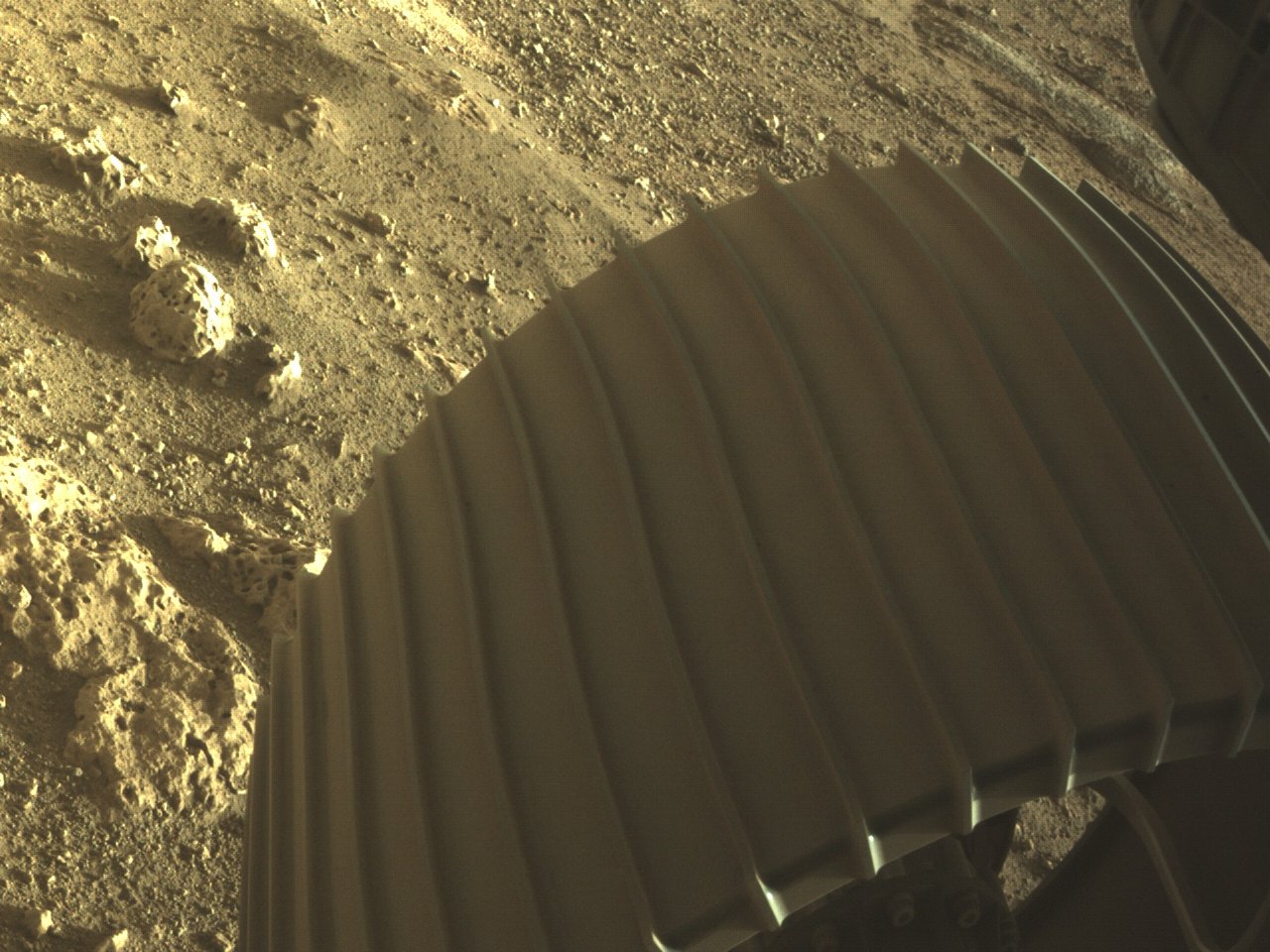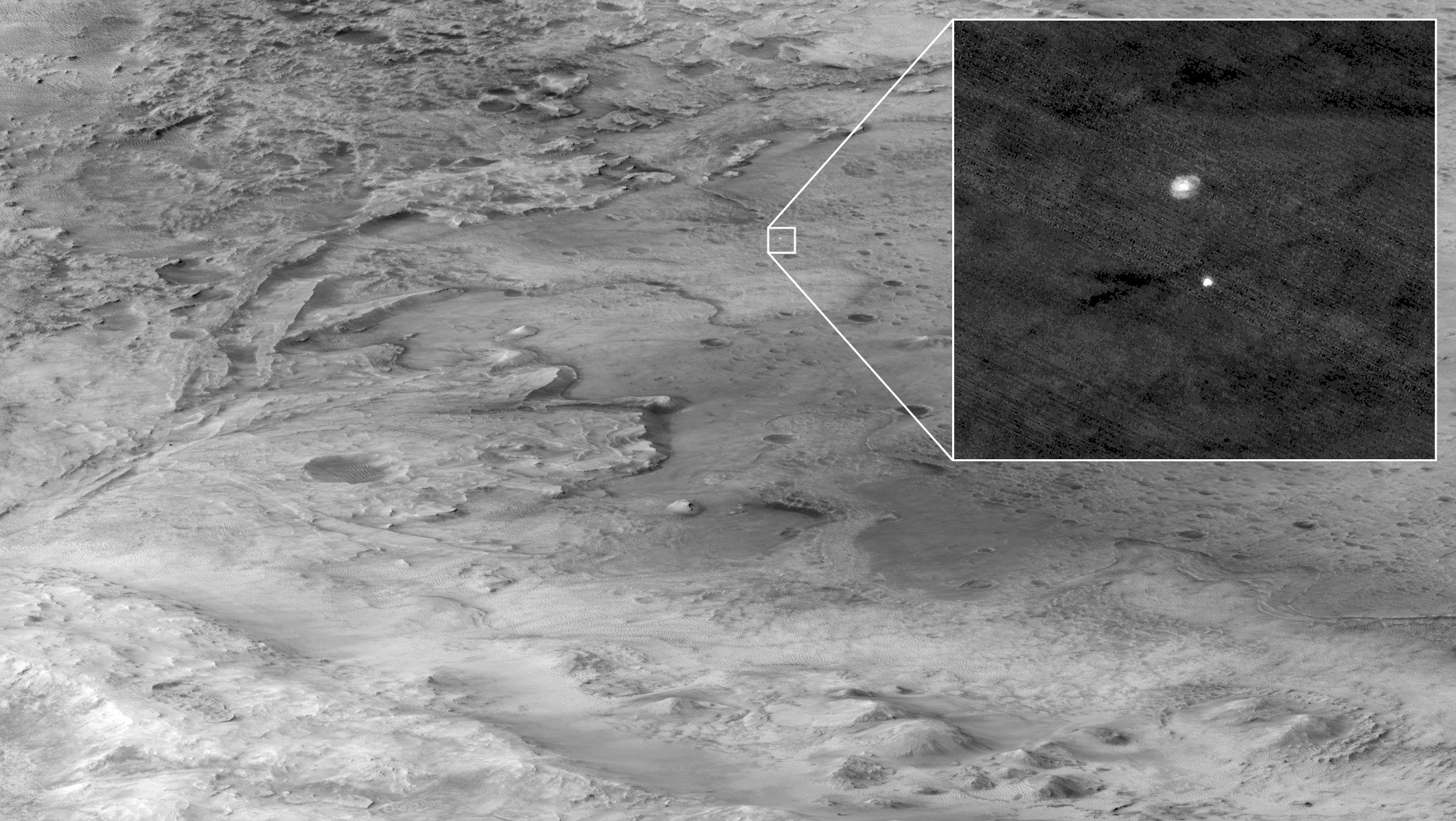The Conviction Mars rover landed safely not long ago , but only after a kinds of complex maneuvers as it descended on high speed through the atmosphere, known among the team as the “seven minutes out of terror. ” NASA has just shared a hair-raising image of the rover as it dangled from its jetpack on the Martian landscape, making that horror a lot easier to understand.
Submitted with others to the rover’s Tweets account (as always, in the quite person), the image is among the first returned from the rover; black-and-white shots from its navigation cameras appeared almost instantly subsequently after landing, but this is the first time omega watches seen the rover — and / or maybe anything, really — from this lookout.
The image was taken by cameras on the descent stage or possibly “jetpack, ” a rocket-powered ancestry module that took over once the create had sufficiently slowed via equally atmospheric friction and its parachute. If your heat shield was jettisoned, Conviction scanned the landscape for a safe landing location, and once that was shown, the jetpack’s job was to coast it there.

The image near the top of the story was taken by the descent stage’s “down-look cameras. ” Image Credits: NASA/JPL-Caltech
To be able to was about 70 feet above the arrival spot, the jetpack would have integrated the “sky crane, ” a collection of cables that would lower the rover to the ground from a distance that nicely allowed the jetpack to look like itself off to a crash making a landing far away.
The image during the top was taken just seconds before landing — it’s a lot hard to tell whether those swirls in the Martian soil are tons, dozens or just a handful of feet below, but follow-up images made it unobstructed that the rocks you can see are small stones, not boulders.
The images are a prompt that the processes we see only third-hand as observers of an HQ track your visitors telemetry data sent millions of kilometres from Mars are in fact very sports, fast and occasionally brutal things. Getting such an investment of time and passion draping from cords above a lointain planet after a descent that set out at 5 kilometers per moment, and required about a hundred various things to go right or else end up just another crater on Mars… it’s sobering and inspiring.
Anyhow, that first person perspective may not even as the most impressive shot of the ancestry. Shortly after releasing that, NASA posted an astonishing image from the Mars Investigation Orbiter, which managed to capture Persistence mid-fall under its parachute:
Keep in mind that MRO was 700 kilometer away, and traveling at through 3 km/second at the time this strategy for was taken. “The extreme way and high speeds of the new people spacecraft were challenging conditions which is required precise timing and for Roter planet (umgangssprachlich) Reconnaissance Orbiter to both frequency upward and roll hard to you see, the left so that Perseverance was viewable by HiRISE at just the right moment in time, ” (NASA) NATIONAL AERONAUTICS AND SPACE ADMINISTRATION wrote in the description of the photo .
Chances are we are going to be treated to a fuller video of the “seven minutes of terror” soon, once NASA collects so much imagery from Perseverance, but for instantly the images above serve as reminders for this ingenuity and skill of the class there, and perhaps a sense of wonder on top of that awe at the capabilities of knowledge and engineering.







